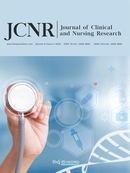Abstract
This study was conducted to explore the factors that are influencing the recurrence of spontaneous pneumothorax after thoracoscopic surgery. Around 110 patients with spontaneous pneumothorax who underwent thoracoscopic bullectomy in Hebei Hospital from May 2017 to May 2021 were included in this study. The patients were divided into the recurrence group (15 cases) and the non-recurrence group (95 cases), and the influences of gender, age, smoking history, height, weight, operation time, the weight of the excised tissue, number of excised pulmonary bullae, postoperative chest tube maintenance time, duration of air leakage, and length of hospital stay on the recurrence of spontaneous pneumothorax after thoracoscopic surgery were investigated. This study found that the height/weight, operation time, duration of air leakage, number of pulmonary bullae removed, weight of the removed tissue, postoperative chest tube maintenance time, and duration of hospital stay in the recurrence group was 3.2 ± 0.4, 50.9 ± 1.2, 2.1 ± 0.4, 1.6 ± 0.2, 4.2 ± 1.3, 2.4 ± 1.5 and 7.2 ± 1.5, respectively. Meanwhile, the recurrence group was 2.6 ± 0.3, 50.8 ± 1.3, 1.3 ± 0.2, 1.8 ± 0.9, 4.4 ± 1.2, 4.1 ± 1.7 and 6.9 ± 1.6, respectively. After comparing the relevant factors between the recurrence group and the non-recurrence group, it was found that there was comparability between age, height/weight, duration of air leakage and postoperative chest tube maintenance time, where these factors were shown to affect the recurrence of spontaneous pneumothorax after thoracoscopic surgery, while gender, smoking, operation time, number of resected bullae, weight of resected tissue and length of hospital stay had no effect on recurrence after spontaneous pneumothoracoscopic surgery. In short, thoracoscopic bullectomy is the best clinical treatment for spontaneous pneumothorax, however the occurrence of recurrence of spontaneous pneumothorax after the operation, which is mainly influenced by the patient’s height/weight, postoperative air leakage duration, and chest tube maintenance time. Therefore, it is essential to pay attention to the surgical treatment of the patients, and fully identify the related factors of postoperative recurrence, thereby the follow-up clinical treatment can be carried out effectively.
References
Cai A, Shen Z, Han Z, et al., 2019, Discussion on the Strategy of Video-Assisted Thoracoscopic Treatment of Postoperative Recurrence of Primary Spontaneous Pneumothorax. Journal of Aerospace Medicine, 30(05): 535–537.
Chen Y, Deng Y, Liu L, 2019, Application of Single Hole Thoracoscopic Surgery in the Treatment of Spontaneous Pneumothorax. World Latest Medical Information Abstracts, 19(27): 111 + 119.
Qin C, 2018, Analysis of Contralateral Recurrence Characteristics and Influencing Factors After Primary Spontaneous Pneumothorax Thoracoscopy. World Latest Medical Information Digest, 18(50): 65–66.
Fu M, 2018, Comparison of the Efficacy and Recurrence of Thoracoscopic Pneumonectomy Versus Suturing in the Treatment of Spontaneous Pneumothorax in the Elderly. International Journal of Medicine and Health, 24(10): 1507–1509.
Fan J, Cheng L, Feng Q, et al., 2018, Effectiveness of Different Thoracoscopic Procedures in Spontaneous Pneumothorax. Laboratory Medicine and Clinical, 15(07): 976–978.
Chen J, 2018, Risk Factors and Nursing Countermeasures for Postoperative Infection After Thoracoscopic Treatment of Spontaneous Pneumothorax. The Great Physician, 3(Z1): 203 + 219.
Kang Z, 2017, Comparison of Thoracoscopic-Assisted Small-Incision Open-Heart Surgery and Total Thoracoscopic Surgery for Spontaneous Pneumothorax. Journal of Contemporary Clinical Medicine, 30(03): 3043–3044.
Yang Z, Yan T, He W, 2017, Current Status of Research on Prognostic Factors Associated with Recurrence of Spontaneous Pneumothorax After Television Thoracoscopy. Chinese Journal of Minimally Invasive Surgery, 17(05): 461–465.
Li J, 2017, Analysis of Risk Factors for Recurrence of Primary Spontaneous Pneumothorax After Thoracoscopy. Tianjin Medical University.
Zhang D, Miao J, Hu X, et al., 2017, Prevention and Treatment of Air Leakage After Primary Spontaneous Pneumothorax and Thoracoscopy. Chinese Journal of Thoracic and Cardiovascular Surgery, 33(04): 212–215.
Wu G, Wu X, Peng C, et al., 2017, Clinical Study on Controlling Postoperative Pulmonary Infection and Long-Term Recurrence of Spontaneous Pneumothorax Treated by Thoracoscopy. Chinese Journal of Nosocomial Infection, 27(04): 861–863 + 871.
Xiang J, Li X, 2016, Single-Port Thoracoscopic Treatment of Spontaneous Pneumothorax in the Elderly and Evaluation of Postoperative Serological Indicators. China Medical Equipment, 13(07): 84–87.
Zhang F, 2016, Study on the Surgical Treatment of Thoracoscopic Surgery in the Recurrence of Primary Spontaneous Pneumothorax After Surgery. Chinese Practical Medicine, 11(15): 107–108.
Li L, Ma Z, 2016, Analysis of Recurrence After Spontaneous Pneumothorax Thoracoscopy and its Influencing Factors. Medical Review, 22(10): 2015–2018.
Li H, Xia H, Zhang X, et al., 2016, Analysis of the Risk Factors of Contralateral Pneumothorax After Thoracoscopic Treatment of Primary Spontaneous Pneumothorax. Journal of Harbin Medical University, 50(02): 134–138.
